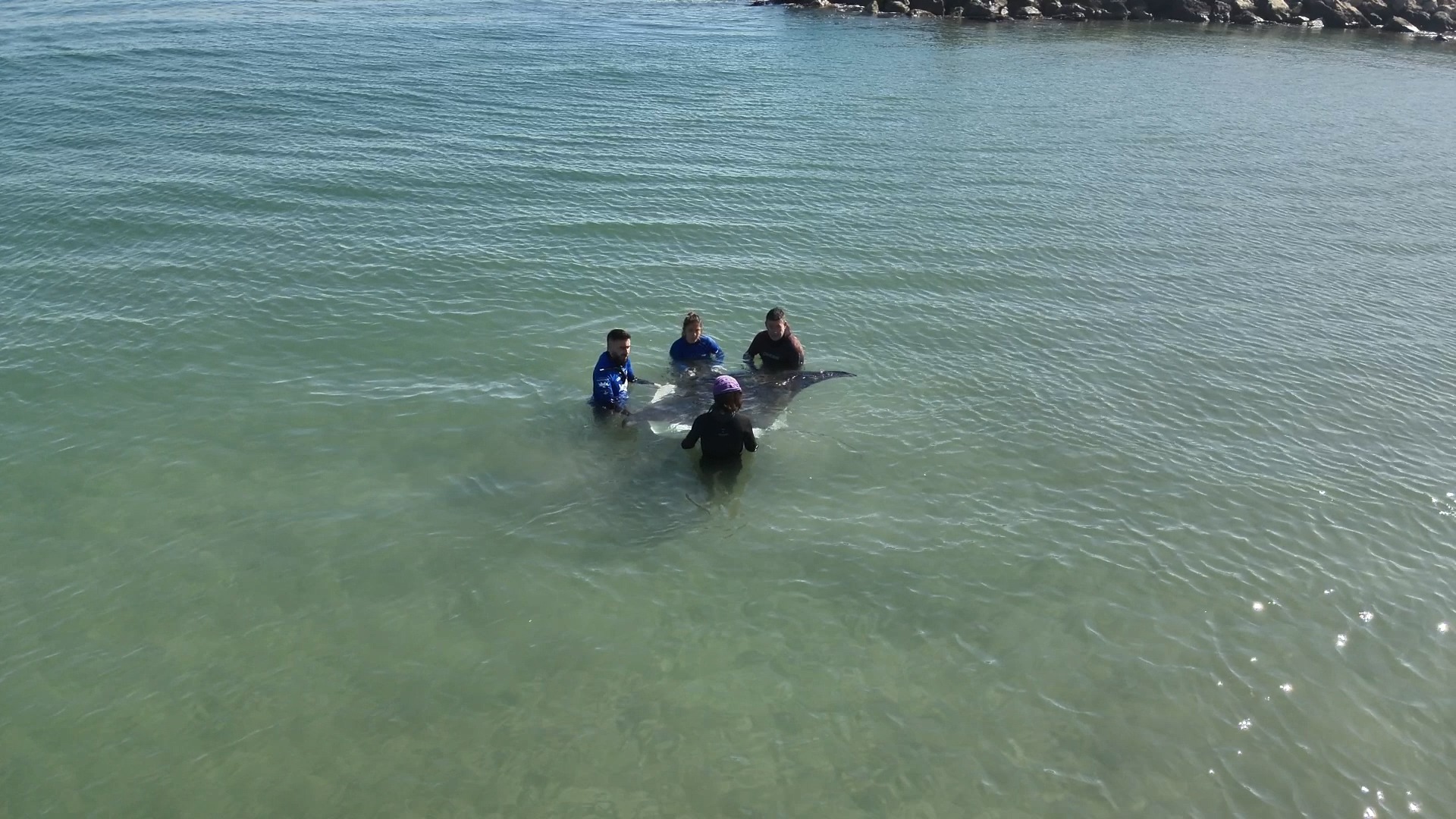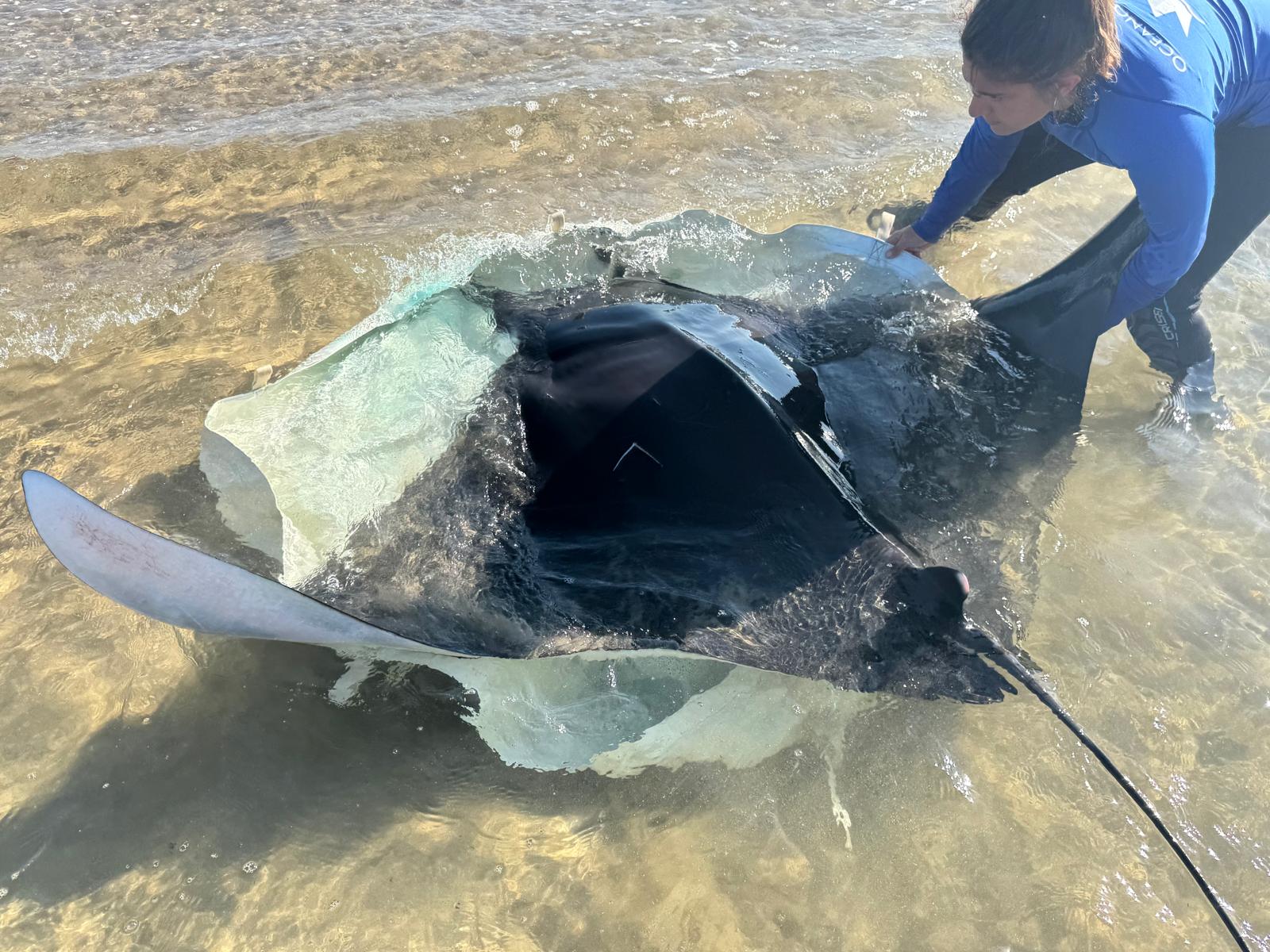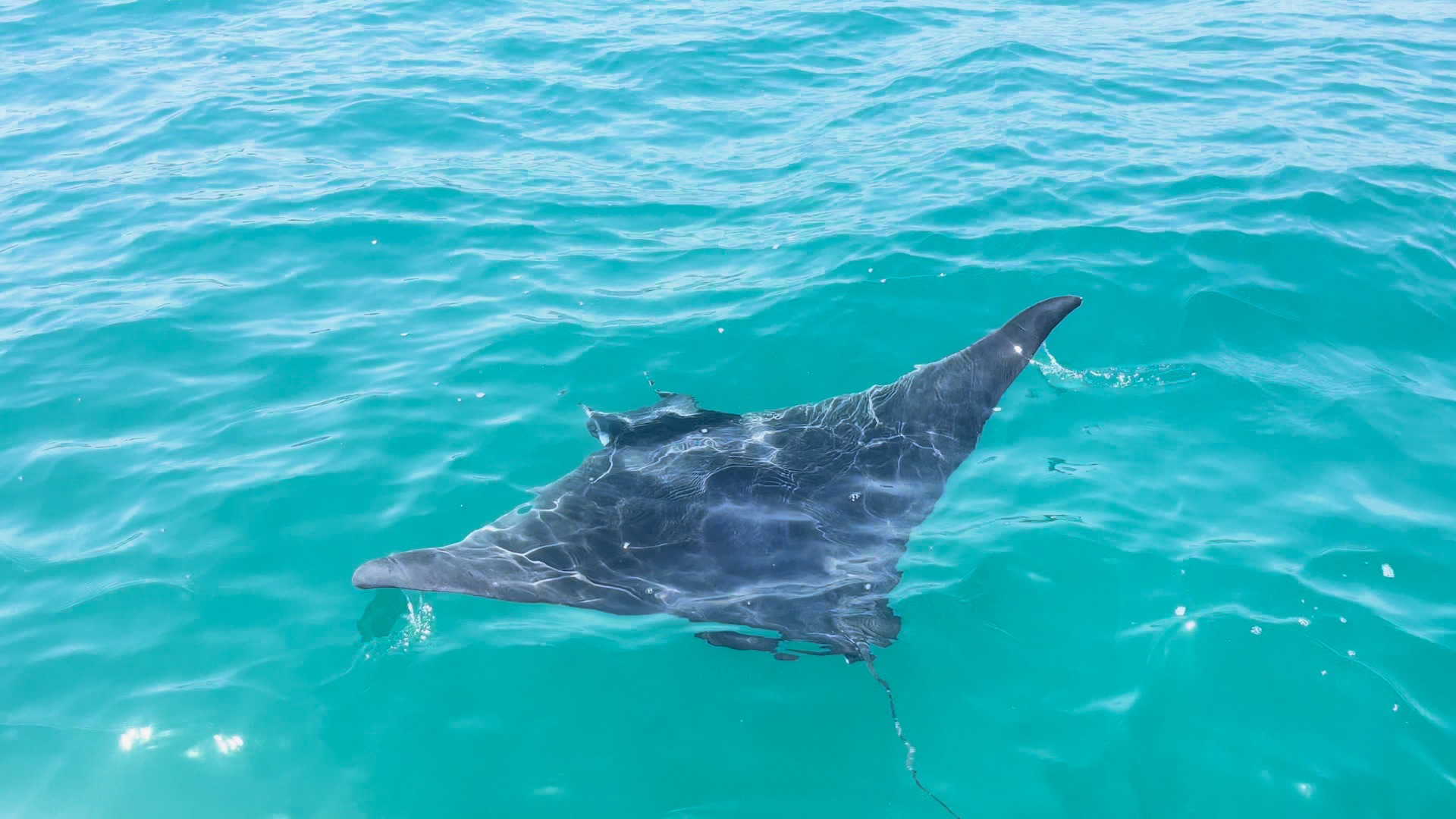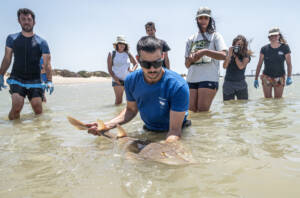Specialists from across the Mediterranean coast are investigating the unusual increase in manta ray strandings on Spanish beaches.
29 de May de 2025

Catalonia, the Valencian Community, Andalusia, and the Balearic Islands have documented nearly twenty cases during the spring.
The hypothesis most supported by experts is that the events are due to multiple factors, given the lack of a clear pattern in the records.
The presence of sharks and rays in the Mediterranean is common, particularly in warm seasons such as spring and summer. Among these species is the manta ray (Mobula mobular), a filter-feeding ray that primarily inhabits the open sea and is in danger of extinction according to the International Union for Conservation of Nature (IUCN).
In recent years, several monitoring groups have documented an increase in manta ray sightings on the coasts of the Spanish Mediterranean, both peninsular and insular.
However, the increase is not limited to sightings; an increase in the number of strandings has also been detected, with nearly 20 cases recorded this spring on beaches in Catalonia, the Valencian Community, Andalusia, and the Balearic Islands.
Faced with this situation, a working group of specialists from different entities in the Spanish Mediterranean was created this last week to try to provide a coordinated response to this phenomenon. Currently, the option most supported by experts is that the strandings are associated with multiple factors simultaneously, since the cases recorded so far do not follow a clear pattern.
Therefore, this group has established common guidelines and various pathological and environmental analyses are being carried out to accurately identify the factors that could be influencing the manta ray strandings that are occurring in recent days.
To continue in this line of work, specialists recommend giving immediate notice to the authorities, by calling 112, upon the presence of manta rays, which will allow early assistance to animals that approach the beaches. It is essential not to further stress stranded individuals. They should not be manipulated or attempts made to reintroduce them. In addition, it is recommended to maintain a safe distance without losing sight of it.
Records indicate that the presence of manta rays in Spanish Mediterranean waters is increasing, thus highlighting the importance of these waters for the life cycle of this species. This is of particular interest, especially considering the potential threats present in the region and the current conservation status of this species. Thus, collaboration between entities and the support of citizens will allow us to better understand this species and develop effective conservation measures.
List of participating entities:
Ministerio Departament de Territori, Habitatge i Transició Ecològica de la Generalitat de Catalunya, Universitat Autònoma de Barcelona, Institut de Ciències del Mar (ICM-CSIC), Asociación Catsharks, Fundació CRAM, Conselleria de Medi Ambient, Infraestructures i Territori de la Generalitat Valenciana, Universitat de València, Fundación Oceanogràfic, Fundación Azul Marino, Associació Lamna, IMEDMAR-UCV, Conselleria d’Agricultura Pesca i Medi Natural del Govern Balear, Fundación Palma Aquarium, Save the Med Foundation, Fundación Marilles, Seashore Environment & Fauna y Ministerio para la Transición Ecológica y el Reto Demográfico.





